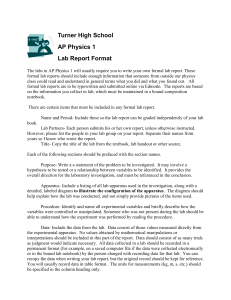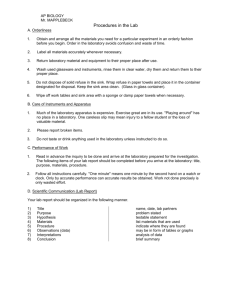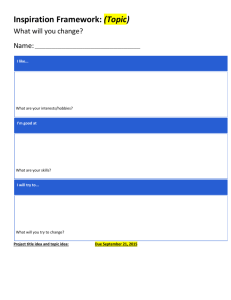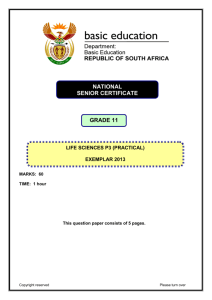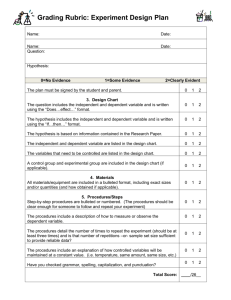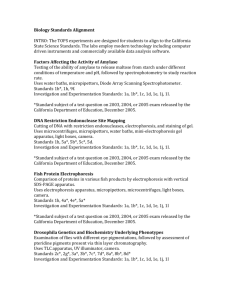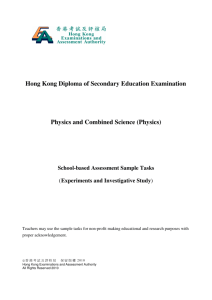Lab Rubric and Lab Writeup Structure EDITED
advertisement
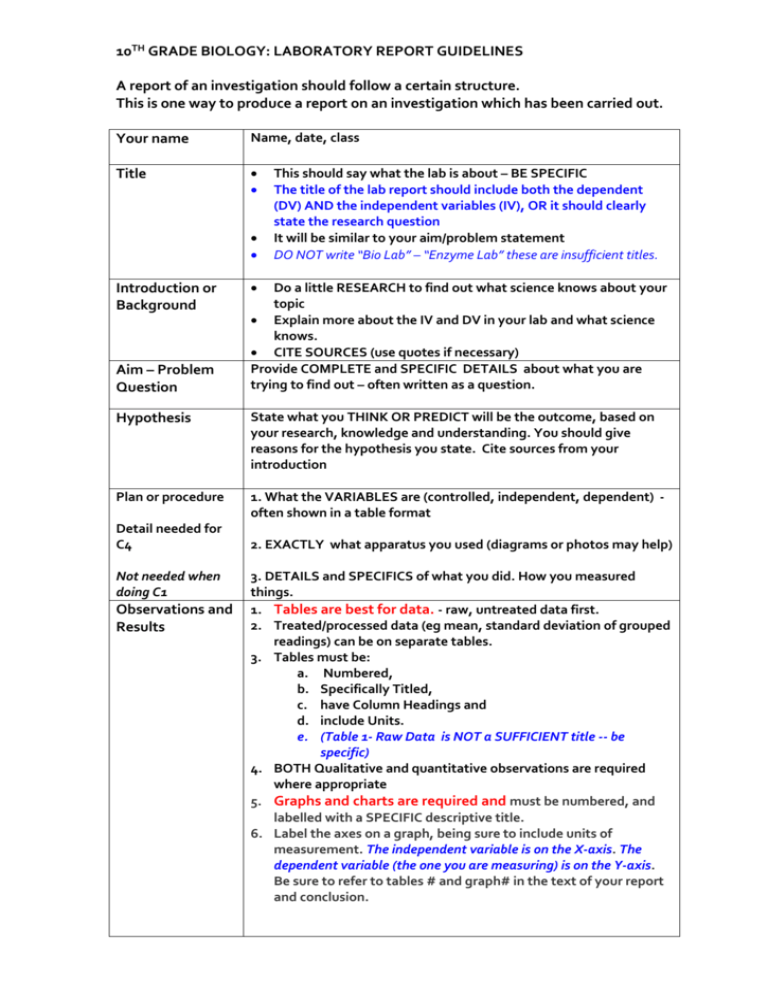
10TH GRADE BIOLOGY: LABORATORY REPORT GUIDELINES A report of an investigation should follow a certain structure. This is one way to produce a report on an investigation which has been carried out. Your name Name, date, class Title Introduction or Background Aim – Problem Question This should say what the lab is about – BE SPECIFIC The title of the lab report should include both the dependent (DV) AND the independent variables (IV), OR it should clearly state the research question It will be similar to your aim/problem statement DO NOT write “Bio Lab” – “Enzyme Lab” these are insufficient titles. Do a little RESEARCH to find out what science knows about your topic Explain more about the IV and DV in your lab and what science knows. CITE SOURCES (use quotes if necessary) Provide COMPLETE and SPECIFIC DETAILS about what you are trying to find out – often written as a question. Hypothesis State what you THINK OR PREDICT will be the outcome, based on your research, knowledge and understanding. You should give reasons for the hypothesis you state. Cite sources from your introduction Plan or procedure 1. What the VARIABLES are (controlled, independent, dependent) often shown in a table format Detail needed for C4 Not needed when doing C1 Observations and Results 2. EXACTLY what apparatus you used (diagrams or photos may help) 3. DETAILS and SPECIFICS of what you did. How you measured things. 1. Tables are best for data. - raw, untreated data first. 2. Treated/processed data (eg mean, standard deviation of grouped readings) can be on separate tables. 3. Tables must be: a. Numbered, b. Specifically Titled, c. have Column Headings and d. include Units. e. (Table 1- Raw Data is NOT a SUFFICIENT title -- be specific) 4. BOTH Qualitative and quantitative observations are required where appropriate 5. Graphs and charts are required and must be numbered, and labelled with a SPECIFIC descriptive title. 6. Label the axes on a graph, being sure to include units of measurement. The independent variable is on the X-axis. The dependent variable (the one you are measuring) is on the Y-axis. Be sure to refer to tables # and graph# in the text of your report and conclusion. Discussion/ Conclusion What the results tell you……does it support your hypothesis… does it agree with what science already knows….EXPLAIN and refer to tables and graphs that show why it doesor does not support your hypothesis and science. Evaluation of the procedure and of the results Of the procedure What worked well in your procedure. Are there clear sources of error? What you could have done to improve the procedure? Of the results Pointing out the accuracy and any anomalies in the results. This could be done in a table showing: good/ why good/ any way to improve and bad/ why bad/ how to improve General marking Criteria for IGCSE COURSEWORK SKILL C1 USING AND ORGANISING TECHNIQUES, APPARATUS AND MATERIALS 1 2 - Follows written, diagrammatic or oral instructions to perform a single practical operation. Uses familiar apparatus and materials adequately, needing reminders on points of safety. 3 4 - Follows written, diagrammatic or oral instructions to perform an experiment involving a series of step-by-step practical operations. Uses familiar apparatus, materials and techniques adequately and safely. 5 6 - Follows written, diagrammatic or oral instructions to perform an experiment involving a series of practical operations where there may be a need to modify or adjust one step in the light of the effect of a previous step. Uses familiar apparatus, materials and techniques methodically, correctly and safely. SKILL C2 OBSERVING, MEASURING AND RECORDING 1 2 - Makes observations or readings, given detailed instructions. Records results in an appropriate manner, given a detailed format. 3 4 - Makes relevant observations or measurements, given an outline format or brief guidelines. Records results in an appropriate manner, given an outline format. 5 6 - Makes relevant observations or measurements to a degree of accuracy appropriate to the instruments or techniques used. Records results in an appropriate manner, given no format. SKILL C3 INTERPRETING AND EVALUATING EXPERIMENTAL OBSERVATIONS AND DATA 1 2 - Processes results in an appropriate manner, given a detailed format. Draws an obvious qualitative conclusion from the results of an experiment. 3 4 - Processes results in an appropriate manner, given an outline format. Recognises and comments on anomalous results. Draws qualitative conclusions that are consistent with obtained results, and deduces patterns in data. 5 6 - Processes results in an appropriate manner, given no format. Deals appropriately with anomalous or inconsistent results. Recognises and comments on possible sources of experimental error. Expresses conclusions as generalisations or patterns, where appropriate. SKILL C4 PLANNING, CARRYING OUT AND EVALUATING INVESTIGATIONS 1 2 - Suggests a simple experimental strategy to investigate a given practical problem. Attempts 'trial and error' modification in the light of the experimental work carried out. 3 4 - Specifies a sequence of activities to investigate a given practical problem. In a situation where there are two variables, recognises the need to keep one of them constant while the other is being changed. Comments critically on the original plan, and implements appropriate changes in the light of the experimental work carried out. 5 6 - Analyses a practical problem systematically and produces a logical plan for an investigation. In a given situation, recognises that there are a number of variables, and attempts to control them. Evaluates chosen procedures, suggests/implements modifications, where appropriate, and shows a systematic approach in dealing with unexpected results.


